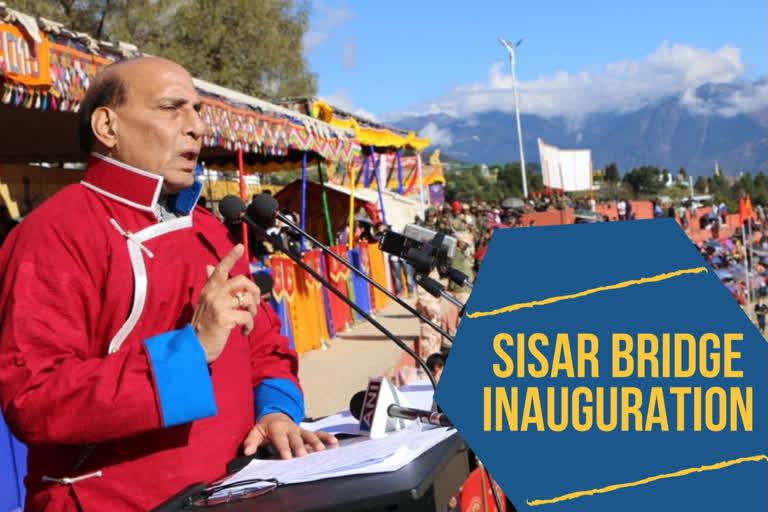New Delhi: Less than a month after inaugurating a militarily strategic bridge over the Shyok River in eastern Ladakh, Rajnath Singh, in his first visit to the state after becoming the Union Defence Minister, will declare open another very important bridge in Eastern Arunachal Pradesh on Friday.
The Sisar bridge over the Sisiri river will directly connect the two districts of East Siang and the Lower Dibang Valley. Earlier, locals had to use a long circuitous route through Assam to travel from one place to another.
From the military point of view, the Sisar bridge which will now be well-connected with the 9.1 km Dhola-Sadiya bridge over the mighty Brahmaputra, will make it much easier for movement of men and material during times of conflict or even to reach out to the high-altitude areas in eastern Arunachal in times of natural disasters as well as to the forward areas on the Line of Actual Control (LAC) - the defacto border between India and China.
With the new bridge, it will be much easy for troops and military equipment to move towards Kibithu in Anjaw district, or even towards Tuting, both situated on the LAC, and potential trouble spots as far as Chinese military transgressions go.
The local commanders of the two armies meet quite a few times every year at Kibithu - one of the five designated points on the LAC - to sort out incessant border misunderstandings.
Two years ago, China had responded with a riposte when Prime Minister Narendra Modi inaugurated the Dhola-Sadiya bridge. It had asked India to adopt "a cautious and restrained attitude on the issue before the final settlement of the border issue" - in an apparent reference to the border issues the two countries have. China disputes India’s territorial suzerainty over Arunachal Pradesh and lays claim to it calling it ‘Southern Tibet’.
Read: Rajnath on two-day visit to Arunachal Pradesh
Girdled by China from the west to the north to the east, Arunachal Pradesh, the biggest state in the Northeast region, is a land of difficult mountain terrain scythed by deep narrow river valleys. The issue of lack of infrastructure development including roads in the state had been an outstanding one.
Until recently, India had followed a policy of not developing its borders with China so as to create a buffer area, but it proved to be a handicap as in the case of the 6.9 strong Sikkim earthquake of September 2011, when it took days before relief could reach the earthquake-affected in northern Sikkim. That was what prompted a u-turn in the Indo-China border development policy of the government.
And then in 2014, the then Arunachal Pradesh Governor Lt Gen (Rtd) Nirbhay Sharma in a scathing report had highlighted the deficiency in roads in the Indian side of the LAC. He had pointed out that for most of the rugged and difficult terrain along the Indo-China border in Arunachal, China has built roads that almost touch the LAC while most of the Indian road-heads peter off at least about 50-70 km from the LAC. He also presented photographic evidence comparing both sides of the LAC.
Three main compelling reasons are behind the road and bridge development rush in Arunachal Pradesh. First, to develop infrastructure to enable faster troops movement to face possible adversary China in case of flare-ups or hostilities; Second, to set up connectivity of the remote swathes with the towns; and third, to ensure socio-economic development.
Read: Naga peace accord in a few days, but will there be peace?



